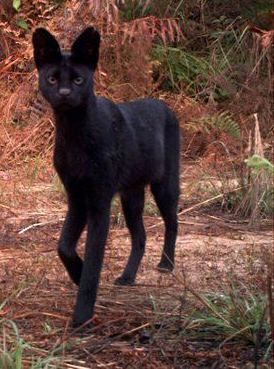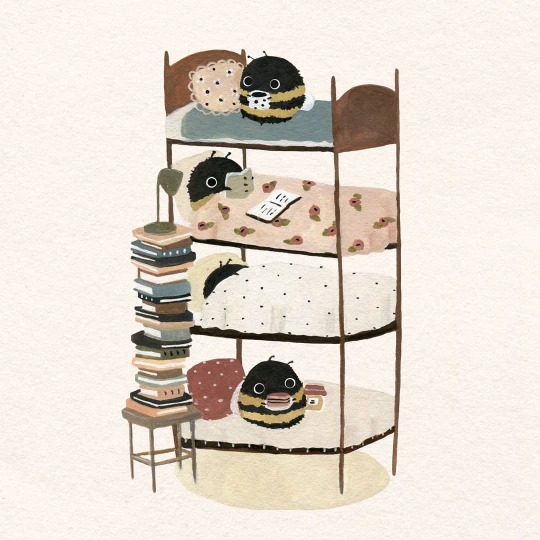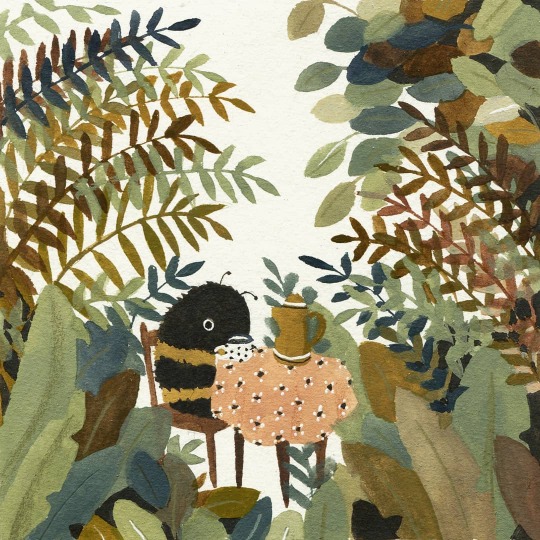Text
there is something so darkly comical about tumblr potentially outliving twitter
tumblr, which is held together with duct tape and madness, run by three raccoons in blood stained Yahoo! hats and a handful of crabs, its only source of income the sale of shoelaces from an inside joke so inside no one knows the original source anymore and fake blue checkmarks... that website still lives on
truly the cockroach of social media and I love it for that
184K notes
·
View notes
Note
Sorry to ask this on anon, but could you please explain your stance/the orthodox stance on iconography and the second commandment. I'm genuinely interested because this is one of the major struggles I have with orthodoxy. Thanks :)
Thanks for your question. First, lets look at the 2nd commandment:
“You shall not make for yourself a carved image, or any likeness of anything that is in heaven above, or that is in the earth beneath, or that is in the water under the earth. You shall not bow down to them or serve them, for I the LORD your God am a jealous God, visiting the iniquity of the fathers on the children to the third and the fourth generation of those who hate me, but showing steadfast love to thousands of those who love me and keep my commandments.” - Exodus 20:4Back when I was a protestant, I was taught that this commandment forbids images in Christian worship and to use images of Christ in the manner of the Orthodox and Catholics is idolatry because Catholics and Orthodox kiss and bow towards icons, statuary, etc. On a casual reading, that interpretation seems to make sense. The commandment says don’t make images so don’t use any images. Imagery is what pagans use, you can’t depict the Christian God, etc.When I began to learn about Orthodoxy, like you, Icons were a struggle for me. Icons are not only optional, but in the Orthodox Church iconic depictions of Christ and the saints are literally considered an essential part of the Christian faith. Before we continue lets consider some things in the Old Testament:Firstly, we have to ask ourselves what is meant by the 2nd commandment. I once believed it was a prohibition of all imagery in Judaeo Christian worship because of the phrase “You shall not make for yourself a carved image, or any likeness of anything that is in heaven above, or that is in the earth beneath, or that is in the water under the earth,”(emphasis mine) but upon a closer examination of scripture I discovered this could not be the proper interpretation. The reason the 2nd command can’t be rightly interpreted to mean a prohibition against all imagery in worship is because God Himself after giving the commandment instructs Moses to use a LOT of images in adorning and constructing the tabernacle. Surely if God meant the prohibition of all imagery He wouldn’t immediately command Moses to break the commandment He just gave. God told Moses to embroider angels on the curtains of the tabernacle and to place carve cherubim of gold on the mercy seat which is the focal point of OT worship and is the throne of God, there were also representations of pomegranates. Also, consider when God had Moses make a bronze serpent to look at when the Israelites were dying from snake bites. Later, when Solomon builds a temple for God and the glory of God fills the temple there are images and statuary of animals, angels, etc. and these things are not depicted in scripture as displeasing to God. All these images are depictions of things in heaven above or in the earth beneath and yet the commandment was not broken in the use of them so the commandment is not a prohibition of the use of imagery categorically. What God does condemn over and over again is the worship of images as Gods. The 2nd commandments is not a condemnation of pictures and statues but a condemnation of idolatry. God is forbidding the worship of false Gods and pagan idolatry, but not imagery all together.Next you may wonder why Orthodox and Catholics see no problem in kissing or bowing towards imagery when the commandment says “You shall not bow down to them or serve them…”(emphasis mine). Again, on a surface level reading this seems to mean ‘don’t bow towards any images ever’ but just like the last part of the command, if you examine the OT you will find there is a more nuanced meaning here. What this means is that we are not to bow in worship towards images as Gods, it does not mean that you cannot give veneration(honor and respect) towards images or symbols of holy things. The historic Church makes a distinction between degrees of honor given to things to show there is a difference between the kind of honor that belongs to God alone and lesser degrees of honor due to other things. Just because God instructs us to give highest honor to him(worship, adoration) this does not mean lesser degrees of honor are not to be given to anything else(veneration). So adoration(worship) is the kind of honor due to God alone and veneration(lesser degrees of honor) are given to other things worthy of honor. For example, God instructs us to honor our parents in the Ten Commandments. No one thinks this honor is idolatry. If you were to bow to your parents or grandparents in respect nobody would think you an idolater. Something like that is veneration and not adoration(the kind of honor that belongs to God alone). Just to clear this up decisively lets look at scripture to see if this distinction is apparent. You will see that it is. Jews literally bowed in worship towards the temple with all its imagery I spoke about above and this did not transgress the commandment. Here’s a couple examples:“I bow down toward your holy temple and give thanks to your name for your steadfast love and your faithfulness, for you have exalted above all things your name and your word.” - Psalm 138:2(emphasis mine_“But as for me, by Your abundant lovingkindness I will enter Your house, At Your holy temple I will bow in reverence for You.” - Psalm 5:7In these two examples you can see that not only did Jews bow towards the temple full of God commanded imagery, but in the second example the bowing is explained as reverence(honor and respect as opposed to idolatry). Veneration is what Orthodox and Catholics are doing when we kiss or bow towards images of Christ and the saints, etc. We do not believe these things to be gods, or God, nor do we worship them. They are not alive, they are mere wood, paint, etc. yet we give honor to the theological truths and persons they represent.To clear this up in another way, consider things such as pledging allegiance to the American Flag, or kissing a picture in your wallet of a loved one. In such cases you are venerating such things not worshiping them. That’s the difference between veneration and worship, between acceptable honor due to certain things and the sin of idolatry. Also, think of all the images protestants venerate but just don’t think of as images. The cross is a carved image of something on the earth beneath, yet no protestants think it idolatrous to bow towards or kiss a cross.Now, lets examine why Orthodox see images of Christ as an essential part of the Christian faith.In the Old Testament, God was revealed in type and shadow. He was not represented visibly because God had never disclosed Himself fully in the Old Covenant. When Moses sees God, God only allows His “back” to be seen yet Moses is not allowed to see God’s face.(Exodus 33:17-23)In the Old Covenant, the invisible God had not yet revealed Himself fully to mankind and so the mystery of God was always revealed in type, shadow, symbols, etc. On the mountain God shows His presence through fire, darkness, etc. Consider this passage:“And you came near and stood at the foot of the mountain, while the mountain burned with fire to the heart of heaven, wrapped in darkness, cloud, and gloom. Then the LORD spoke to you out of the midst of the fire. You heard the sound of words, but saw no form; there was only a voice.” - Deuteronomy 4:11-12Keep reading that chapter and again, God warns the Israelites against making graven images of Him and representing Him in images. God had not disclosed himself to them visibly and so they were not to represent God’s form. They were not to make God into something God was not.Keeping those things about the Old Covenant in mind, consider the New Covenant in Christ. Christ is the invisible God made visible in the incarnation. When Christ is with Moses and Elijah on the mountain this time during the transfiguration there is not darkness and gloom but light and Christ Himself is made luminous. To see Christ in the incarnation as one who is both fully God and fully man is to behold God Himself. Christ is the ultimate disclosure of God to manking. Christ says, “Whoever has seen me has seen the Father.”(John 14:9) Christ is the light of the world and the way, Christ is God Himself made visible and fully disclosed to mankind. That’s why the Apostles when speaking of Christ as God The Son say things like “That which was from the beginning, which we have heard, which we have seen with our eyes, which we looked upon and have touched with our hands, concerning the word of life—” - 1 John 1:1. God did not merely reveal a voice to us in the New Covenant as in the Old but in Christ God was seen, touched, and disclosed to us fully in the person of Christ.In Exodus they “saw no form” but in Christ we truly see God because “…in him the whole fullness of deity dwells bodily…”(Col. 2:9). Contrast the following passage about Christ with the passage above from Deuteronomy:“Who being the brightness of his glory, and the express image of his person, and upholding all things by the word of his power, when he had by himself purged our sins, sat down on the right hand of the Majesty on high;” - Hebrews 1:3(KJV emphasis mine)In that passage the Greek word translated as “the express image” is χαρακτήρ which is translated in other translations as “the exact imprint of His nature”(ESV) or “the exact representation of His nature”(NASB). Look up that Greek word in Strong’s Concordance and you will find that the definitions of that word are as follows:“1: the instrument used for engraving or carving2: the mark stamped upon that instrument or wrought out on it
a: a mark or figure burned in (Lev. 13:28) or stamped on, an impression
b: the exact expression (the image) of any person or thing, marked likeness, precise reproduction in every respect, i.e facsimile”
How interested that in the second commandment God forbid graven or carved images but in Christ the word used in the passage suggests “an instrument used for engraving or carving”, “a mark or figure burned or stamped on”, “(the image) of any person or thing, marked likeness..”, etc.Synonyms for the word “icon” are “image, likeness, picture, etc.”So to say Christ is the “express image” of the invisible God is merely to say Christ is the express icon of God.Christ in the incarnation was fully man and fully God, two natures in one divine person in the incarnation. To see Christ the man was to see God The Son. In Christ the invisible God was made visible. When you see the human form of Christ, you see God. When Orthodox Christians represent Christ in icons we are in images confessing that God “became flesh and dwelt among us”. In history heretics and false religions have denied that God became man to save us and so Orthodox see depictions of Christ as essential because they witness that God became visible in Christ. The show God became man. They show God loved us so much as to enter into our human experience to save us. For Orthodox Christians, iconoclasm(being against images of Christ and the saints) is seen as almost a denial of the incarnation or at least a misunderstanding of the significance of the invisible God making Himself visible in Christ.Icons are not idols, yet they are more than just mere pictures because they represent holy things and so we venerate(honor) what is represented. The saints along with Christ are represented because they are those who through the Gospel have been conformed to the image of Christ. We venerate them because of Christ in them, the saints are not God but they made themselves by grace, true temples of the Holy Spirit. They are worthy of honor, yet we do not worship them.Lastly, there’s a book you should get(it’s not long). After I read the following book, I had no issue with icons whatsoever:
Three Treatises on the Divine Images by St. John of DamascusThat book will explain more in depth and with more examples, etc. what I’ve tried to explain in this answer. Last of all, I leave you with these words of St. John of Damascus which are helpful when contemplating these things:“Concerning the charge of idolatry: Icons are not idols but symbols, therefore when an Orthodox venerates an icon, he is not guilty of idolatry. He is not worshiping the symbol, but merely venerating it. Such veneration is not directed toward wood, or paint or stone, but towards the person depicted. Therefore relative honor is shown to material objects, but worship is due to God alone. We do not make obeisance to the nature of wood, but we revere and do obeisance to Him who was crucified on the Cross… When the two beams of the Cross are joined together I adore the figure because of Christ who was crucified on the Cross, but if the beams are separated, I throw them away and burn them.” - St. John of Damascus
59 notes
·
View notes
Note
how can you eat the fried hearts of something that once was alive and had a beating heart? do you feel any guilt? i hope you do.
please google what an artichoke is
257K notes
·
View notes
Photo

Distant yell could be heard from the swamp
29K notes
·
View notes
Photo

Holy mount Athos
Monastery of Vatopaidi
17K notes
·
View notes
Text
Please consider supporting this in any way you are able and keep Remy in your prayers. He is my little cousin. Also, please share this on your blogs. Thank you all in advance!
13 notes
·
View notes
Video
118K notes
·
View notes
Text
in grade 6 and every time we had a movie day or class party id ask my mom for a can of doctor pepper but i had to keep it in my backpack and it always got shaken up and would explode when i opened it bcus we all know dr pepper has much more chaos inside the can than any other soda and anyways my whole class instinctively knew every time that my doctor pepper would explode and we'd have to pause the movie and clean it up and id usually be covered in dr pepper for the rest of the day and be super embarrassed and this happened to me about twelve times throughout the year. you might be wondering why i couldnt keep my dr pepper in my locker until we watched the movie and its because i didnt have a locker in grade six after i left a piece of pumpkin pie that my teacher gave me in there for a month and it rotted and molded so bad and there were maggots everywhere so one day i locked the locker and refused to open it ever again so for a whole year i carried all my stuff around because i was afraid to go to admin and tell them about my maggot pie because someone started a rumor that if the principle figured out you did something bad she would lock you down in the basement storage room that was infamous for having a giant rat that lived inside of it and i was afraid of rats after seeing ratatouille because i thought a rat might climb inside my hair and start controlling me and force me to do things i didnt want to do like make soup
133K notes
·
View notes
Photo

“Your accumulated offenses do not surpass the multitude of God’s mercies; your wounds do not surpass the great Physician’s skill.”
—St Cyril of Jerusalem
63 notes
·
View notes
Photo

111,111,111 x 111,111,111 = 12,345,678,987,654,321
Source: MATH
2K notes
·
View notes
Text

The demons cunningly withdraw for a time in the hope that we will cease to guard our heart, thinking we have now attained peace; then they suddenly attack our unhappy soul and seize it like a sparrow. Gaining possession of it, they drag it down mercilessly into all kinds of sin, worse than those which we have already committed and for which we have asked forgiveness. Let us stand, therefore, with fear of God and keep guard over our heart, practicing the virtues which check the wickedness of our enemies.
St. Isaiah the Solitary
28 notes
·
View notes
Photo

Queen Maria of Yugoslavia (earlier Princess Maria of Romania) on her wedding in 1922 with Alexander I of Yugoslavia. From Les Modes December 1923. Photo by F. Gastineau.
1K notes
·
View notes













